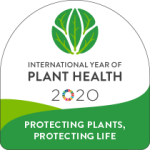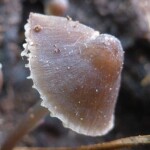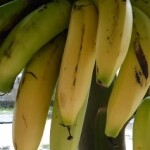 The 2020 IY of Plant Heath (IYPH) aimed to raise global awareness on how protecting plant health can help end hunger, reduce poverty, protect the environment, and boost economic development. However, when what was in the news this year was very obviously about threats to health – human mainly – the articles explored these issues, with an aim that developing their understanding would be transferable to better understanding the threats to plants and therefor what protections we have for plant health and why they are needed. All four articles in 2020 provided activities to encourage such learnings and links to many on-line resources to support and extend that.
The 2020 IY of Plant Heath (IYPH) aimed to raise global awareness on how protecting plant health can help end hunger, reduce poverty, protect the environment, and boost economic development. However, when what was in the news this year was very obviously about threats to health – human mainly – the articles explored these issues, with an aim that developing their understanding would be transferable to better understanding the threats to plants and therefor what protections we have for plant health and why they are needed. All four articles in 2020 provided activities to encourage such learnings and links to many on-line resources to support and extend that.
IYPH Fire Safety and Bushfires -(issue 163) With fires raging, this article was written to  focus on measures that are taken to protect human health in fire events. It began with providing links to on-line fire safety educational resources, mostly suited to primary levels, and then some better suited to older students. Destruction and protecting humans and plants from fires is a part of a history of fires that can be found through literature, the Arts and mapping. As a direct introduction to the IYPH, monitoring plant recovery was suggested – especially of epicormic growth from tree trunks.
focus on measures that are taken to protect human health in fire events. It began with providing links to on-line fire safety educational resources, mostly suited to primary levels, and then some better suited to older students. Destruction and protecting humans and plants from fires is a part of a history of fires that can be found through literature, the Arts and mapping. As a direct introduction to the IYPH, monitoring plant recovery was suggested – especially of epicormic growth from tree trunks.
Threats Too Tiny to see  (issue 165) With Covid-19 raging in many parts of the world as I wrote this article, it aimed to put viruses in the context of many other tiny things that can threaten humans – and plants. Activities began with considering the invisible in our surroundings. Clues to the many tiny potentially dangerous things can be found from our senses. Water vapour, dust, pollen, mould, fungi spores and bacteria are all larger than any virus.
(issue 165) With Covid-19 raging in many parts of the world as I wrote this article, it aimed to put viruses in the context of many other tiny things that can threaten humans – and plants. Activities began with considering the invisible in our surroundings. Clues to the many tiny potentially dangerous things can be found from our senses. Water vapour, dust, pollen, mould, fungi spores and bacteria are all larger than any virus.
Growing at a Fast Rate  (issue 164) With Melbourne thrown into its second wave and lockdown, providing an understanding of exponential growth rates (whether it might apply to humans, animals or plant health) was the aim of this article. Examples were drawn from fruit mould, cat populations, pest animals and especially Cane Toads, as a foundation for understanding the threat posed by the current growth of Covid-19 cases.
(issue 164) With Melbourne thrown into its second wave and lockdown, providing an understanding of exponential growth rates (whether it might apply to humans, animals or plant health) was the aim of this article. Examples were drawn from fruit mould, cat populations, pest animals and especially Cane Toads, as a foundation for understanding the threat posed by the current growth of Covid-19 cases.
IY Plant Health (e.g. bananas)  (issue 166) This article aimed to transfer some of the understandings from the previous three articles to issues for the IYPH. It thus began with the IYPH slogan “Protecting plants, protecting life” and its six key messages.
(issue 166) This article aimed to transfer some of the understandings from the previous three articles to issues for the IYPH. It thus began with the IYPH slogan “Protecting plants, protecting life” and its six key messages.
Banana focused environmental education activities were provided to explore these. Many were suited for use in a range of student levels: as a food; in a food chain; in a food web; viewed in the transport of energy through a system; where they grow globally and in Australia; historical origin in Australia; a banana health problem – its T4 pandemic and biosecurity rules around this. Our experiences with Covid-19 should help understand the biosecurity implications and current protections for this and other plant health issues.
This article introduced some great interactive mapping websites that enable identifying when and where a product is grown. It was also an opportunity for some higher level digital education, in the form of considering the strengths and best use of such maps/graphs as a visual communication.
return to list of environmental articles in Otherways by IY from 2010- present
page set up 30 December 2020
